Breakdown at Multiple Protrusions in SF6 and CO2
Abstract
1. Introduction
2. Test Setups
2.1. Test Circuit and Protrusion Setup
2.2. Electrodes with Surface Roughness
3. Evaluation Procedures
3.1. Breakdown Probability Distributions
3.2. Discharge Inception and Breakdown Models
3.2.1. First Electron
3.2.2. Streamer Inception
3.2.3. Streamer Crossing and Spark Transition
3.2.4. Leader Propagation and Breakdown
4. Results
4.1. Protrusions with SF6
4.2. Protrusions with CO2
4.3. Electrodes with Surface Roughness
5. Discussion
6. Conclusions
Author Contributions
Funding
Acknowledgments
Conflicts of Interest
References
- Ryan, H.M.; Jones, G.R. SF6 Switchgear; Peter Pelegrinus Ltd.: London, UK, 1989. [Google Scholar]
- Arora, R.; Mosch, W. High Voltage and Electrical Insulation Engineering; Wiley-IEEE Press: Piscataway, NJ, USA, 2011; ISBN 978-0-470-60961-3. [Google Scholar]
- IEC 62271-1 Ed. 1.0 2007-10 International Standard: High-Voltage Switchgear and Controlgear; Part 1: Common Specifications; International Electrotechnical Commission: Geneva, Switzerland, 2007.
- IEEE C37.06-2009.09.11: AC High-Voltage Circuit Breakers Rated on a Symmetrical Current Basis-Preferred Ratings and Related Required Capabilities for Voltages above 1000 V; IEEE: New York, NY, USA, 2009.
- Mosch, W.; Hauschild, W. Hochspannungsisolierungen Mit Schwefelhexafluorid; VEB Verlag Technik: Berlin, Germany, 1979. [Google Scholar]
- Kuechler, A. High Voltage Engineering: Fundamentals-Technology-Applications; Springer Vieweg: Heidelberg, Germany, 2017; ISBN 978-3-642-11992-7. [Google Scholar] [CrossRef]
- United Nations Framework Convention on Climate Change. 2014. Available online: https://unfccc.int/ghg_data/items/3825.php (accessed on 4 April 2018).
- Seeger, M.; Smeets, R.; Yan, J.; Ito, H.; Claessens, M.; Dullni, E.; Franck, C.M.; Gentils, F.; Hartmann, W.; Kieffel, Y.; et al. Recent development and interrupting performance with SF6 alternative gases. Electra 2017, 291, 26–29. [Google Scholar]
- Tian, S.; Zhang, X.; Cressault, Y.; Hu, J.; Wang, B.; Xiao, S.; Li, Y.; Kabbaj, N. Research status of replacement gases for in power industry. AIP Adv. 2020, 10, 050702. [Google Scholar] [CrossRef]
- Li, X.; Zhao, H.; Murphy, A.B. SF6-alternative gases for application in gas-insulated switchgear. J. Phys. D Appl. Phys. 2018, 51, 153001. [Google Scholar] [CrossRef]
- Seeger, M. Perspectives on research on high voltage gas circuit breakers. Plasma Chem. Plasma Process. 2015, 35, 527–541. [Google Scholar] [CrossRef]
- Rabie, M.; Franck, C.M. Assessment of Eco-friendly Gases for Electrical Insulation to Replace the Most Potent Industrial Greenhouse Gas SF6. Environ. Sci. Technol. 2018, 52, 369–380. [Google Scholar] [CrossRef]
- Nitta, T.; Yamada, N.; Fujiwara, Y. Area effect of electrical breakdown in compressed SF6. IEEE Trans. Power Appar. Syst. 1974, 2, 623–629. [Google Scholar] [CrossRef]
- Pedersen, A. Limitations of breakdown voltages in SF6 caused by electrode surface roughness. In Proceedings of the Conference on Electrical Insulation & Dielectric Phenomena-Annual Report 1974, Downingtown, PA, USA, 21–23 October 1974; IEEE: New York, NY, USA, 1974; pp. 457–464. [Google Scholar]
- Pedersen, A.; Karlsson, P.W.; Bregnsbo, E.; Nielsen, T.M. Anomalous breakdown in uniform field gaps in SF6. IEEE Trans. Power Appar. Syst. 1974, 6, 1820–1826. [Google Scholar] [CrossRef]
- Berger, S. Onset or breakdown voltage reduction by electrode surface roughness in air and SF6. IEEE Trans. Power Appar. Syst. 1976, 95, 1073–1079. [Google Scholar] [CrossRef]
- McAllister, I.W. A multiple protrusion model for surface roughness effects in compressed SF6. Elektrotechnische Z. A 1978, 99, 283–284. [Google Scholar]
- Crichton, B.H.; Lee, D.I.; Tedford, D.J. Prebreakdown in Compressed SF6 and SF6/N2 Mixtures in Projection Perturbed Uniform Fields. In Proceedings of the 4th International Conference on Gas Discharges, Swansea, UK, 7–10 September 1976; pp. 199–202. [Google Scholar]
- Bortnik, I.; Ierusalimov, M.; Borin, V.; Varivodov, V.; Vertikov, V.; Ilenko, O.; Kuz’mina, Y. Evaluation of the requirements on the surface finish of electrodes in SF6 insulation. Electr. Technol. USSR 1985, 4, 43–49. [Google Scholar]
- Oiu, Y.; Li, R.; Kuffel, E.; Liu, M. Effect of electrode surface roughness on breakdown of SF6 gas insulation. In Proceedings of the Conference Record of the 1988 IEEE International Symposium on Electrical Insulation, Cambridge, MA, USA, 5–8 June 1988; IEEE: New York, NY, USA, 1988; pp. 93–96. [Google Scholar] [CrossRef]
- Li, R.; Qiu, Y. A new multi-ridge model for electrode surface roughness effect in SF6. In Proceedings of the Second International Conference on Properties and Applications of Dielectric Materials, Beijing, China, 12–16 September 1988; pp. 105–108. [Google Scholar] [CrossRef]
- El-Makkawy, S.M. Electrode surface roughness initiated breakdown in compressed SF6 gas. In Proceedings of the Electrical Insulation and Dielectric Phenomena, IEEE 1994 Annual Report, Arlington, TX, USA, 23–26 October 1994; pp. 948–953. [Google Scholar] [CrossRef]
- Lederle, C.; Kindersberger, J. The influence of surface roughness and coating on the impulse breakdown voltage in SF6. In Proceedings of the 17th Annual Meeting of the IEEE Lasers and Electro-Optics Society, LEOS 2004, Boulder, CO, USA, 20 October 2004; pp. 522–525. [Google Scholar] [CrossRef]
- Lederle, C.; Kindersberger, J. The influence of surface roughness and dielectric coating on ac and dc breakdown voltage in SF6. In Proceedings of the 14th International Symposium on High Voltage Engineering, Beijing, China, 25–29 August 2005; pp. 1–6. [Google Scholar]
- Shiiki, M.; Sato, M.; Hanai, M.; Suzuki, K. Dielectric performance of CO2 gas compared with N2 gas. In Gaseous Dielectrics IX; Christophorou, L.G., Olthoff, J.K., Eds.; Springer: Boston, MA, USA, 2001; pp. 365–370. [Google Scholar] [CrossRef]
- Uchii, T.; Hoshina, Y.; Mori, T.; Kawano, H.; Nakamoto, T.; Mizoguchi, H. Investigations on SF6-free gas circuit breaker adopting CO2 gas as an alternative arc-quenching and insulating medium. In Gaseous Dielectrics X; Christophorou, L.G., Olthoff, J.K., Vassiliou, P., Eds.; Springer: Boston, MA, USA, 2004; pp. 205–210. [Google Scholar] [CrossRef]
- Juhre, K.; Kynast, E. High pressure N2, N2/CO2 and CO2 gas insulation in comparison to SF6 in GIS applications. In Proceedings of the XIVth International Symposium on High Voltage Engineering, Beijing, China, 25–28 August 2005. [Google Scholar]
- Meijer, S.; Smit, J.J.; Girodet, A. Comparison of the breakdown strength of N2, CO2 and SF6 using the extended up-and-down method. In Proceedings of the 2006 IEEE 8th International Conference on Properties applications of Dielectric Materials, Bali, Indonesia, 26–30 June 2006; pp. 653–656. [Google Scholar] [CrossRef]
- Okabe, S.; Goshima, H.; Tanimura, A.; Tsuru, S.; Yaegashi, Y.; Fujie, E.; Okubo, H. Fundamental insulation characteristic of high-pressure CO2 gas under actual equipment conditions. IEEE Trans. Dielectr. Electr. Insul. 2007, 14, 83–90. [Google Scholar] [CrossRef]
- Hikita, M.; Ohtsuka, S.; Yokoyama, N.; Okabe, S.; Kaneko, S. Effect of electrode surface roughness and dielectric coating on breakdown characteristics of high pressure CO2 and N2 in a quasi-uniform electric field. IEEE Trans. Dielectr. Electr. Insul. 2008, 15, 243–250. [Google Scholar] [CrossRef]
- Ka, S.; Inami, K.; Hama, H.; Ueta, G.; Wada, J.; Okabe, S. Lightning impulse and ac breakdown characteristics of CO2 gas under quasi-uniform electric field using real-size gas-insulated switchgear model. In Proceedings of the 18th International Symposium on High Voltage Engineering, Seoul, Korea, 25 August 2013; pp. 1549–1553. [Google Scholar]
- Yoshida, T.; Ka, S.; Shimizu, Y.; Inami, K.; Hama, H.; Ueta, G.; Wada, J.; Okabe, S. Metallic particle motion and its sparkover property at AC voltages in N2, CO2, dry air and SF6. In Proceedings of the 9th International Workshop on High Voltage Engineering (IWHV 2014), Okinawa, Japan, 7–8 November 2014. [Google Scholar]
- Yoshida, T.; Shimizu, Y.; Inami, K.; Hama, H.; Ueta, G.; Wada, J.; Okabe, S. Partial discharge and breakdown properties in N2, CO2, dry air and SF6 initiated by metallic particles fixed on high voltage conductor and attached on spacer surface at ac voltages. In Proceedings of the 20th International Symposium on High Voltage Engineering, Buenos Aires, Argentina, 28 August–1 September 2017. [Google Scholar]
- Bujotzek, M.; Seeger, M. Parameter dependence of gaseous insulation in SF6. IEEE Trans. Dielectr. Electr. Insul. 2013, 20, 845–855. [Google Scholar] [CrossRef]
- Seeger, M.; Niemeyer, L.; Bujotzek, M. Leader propagation in uniform background fields in SF6. J. Phys. D Appl. Phys. 2009, 42, 185205. [Google Scholar] [CrossRef]
- Seeger, M.; Stoller, P.; Garyfallos, A. Breakdown fields in synthetic air, CO2, a CO2/O2 mixture, and CF4. IEEE Trans. Dielectr. Electr. Insul. 2017, 24, 1582–1591. [Google Scholar] [CrossRef]
- Seeger, M.; Avaheden, J.; Pancheshnyi, S.; Votteler, T. Streamer parameters and breakdown in CO2. J. Phys. D Appl. Phys. 2017, 50, 1–15. [Google Scholar] [CrossRef]
- Seeger, M.; Niemeyer, L.; Bujotzek, M. Partial discharges and breakdown at protrusions in uniform background fields in SF6. J. Phys. D Appl. Phys. 2008, 41, 185204. [Google Scholar] [CrossRef]
- Hauschild, W.; Mosch, W. Statistical Techniques for High-Voltage Engineering; Peter Peregrinus on Behalf of the Institution of Electrical Engineers: London, UK, 1992; Volume 13, ISBN 978-0863412059. [Google Scholar]
- Dunz, T.; Fruth, B.; Niemeyer, L.; Ullrich, L.; Diederich, K.; Hassig, M. Electrical field on rough electrode surfaces and its influence on the statistical properties of SF6 breakdown. In Proceedings of the 6th International Symposium of High Voltage Engineering, ISH, New Orleans, LA, USA, 28 August–1 September 1989. [Google Scholar]
- Weibull, W. A statistical distribution function of wide applicability. Trans. Am. Soc. Mech. Eng. 1951, 32, 293–297. [Google Scholar]
- Kiyan, T.; Ihara, T.; Kameda, S.; Furusato, T.; Hara, M.; Akiyama, H. Weibull Statistical Analysis of Pulsed Breakdown Voltages in High-Pressure Carbon Dioxide Including Supercritical Phase. IEEE Trans. Plasma Sci. 2011, 39, 1729–1735. [Google Scholar] [CrossRef]
- Whitehouse, D.J. Surfaces and Their Measurement; Kogan Page Science: London, UK, 2002; ISBN 978-1-903996-01-0. [Google Scholar] [CrossRef]
- Turnbull, B.W. Nonparametric estimation of survivorship function with doubly censored data. J. Am. Stat. Assoc. 1974, 69, 169–173. [Google Scholar] [CrossRef]
- Zaengl, W.S.; Petcharaks, K. Application of Streamer Breakdown Criterion for Inhomogeneous Fields in Dry Air and SF6. In Gaseous Dielectrics VII; Christophoru, L.G., James, D.R., Eds.; Springer: Bosten, MA, USA, 1994; pp. 153–159. [Google Scholar]
- Naidis, G.V. Simulation of streamer-to-spark transition in short non-uniform air gaps. J. Phys. D Appl. Phys. 1999, 32, 2649–2654. [Google Scholar] [CrossRef]
- Seeger, M.; Votteler, T.; Pancheshnyi, S.; Carstensen, J.; Garyfallos, A.; Schwinne, M. Breakdown in CO2/O2 and CO2/O2/C2F4 mixtures at elevated temperatures in the range 1000–4000 K. Plasma Phys. Technol. 2019, 6, 39–42. [Google Scholar] [CrossRef]
- Ono, R.; Oda, T. Visualization of Streamer Channels and Shock Waves Generated by Positive Pulsed Corona Discharge Using Laser Schlieren Method. J. Appl. Phys. 2004, 43, 321–327. [Google Scholar] [CrossRef]
- Bujotzek, M.; Seeger, M.; Schmidt, F.; Koch, M.; Franck, C. Experimental investigation of streamer radius and length in SF6. J. Phys. D Appl. Phys. 2015, 48, 245201. [Google Scholar] [CrossRef]
- Seeger, M. Electric breakdown in high voltage gas circuit breakers. In Proceedings of the 22nd International Conference on Gas Discharges and Their application, Novi Sad, Serbia, 7 September 2018. [Google Scholar]
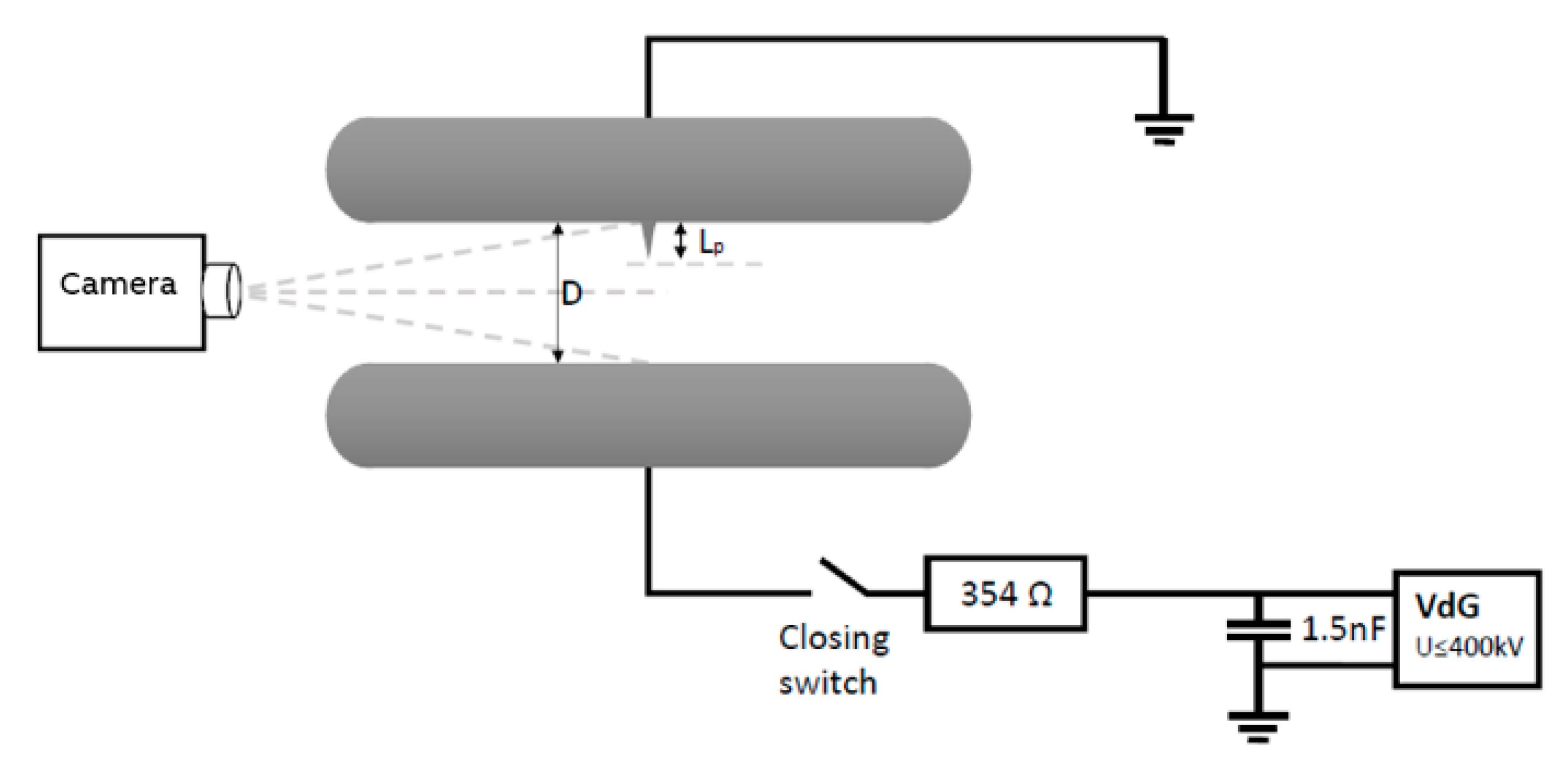

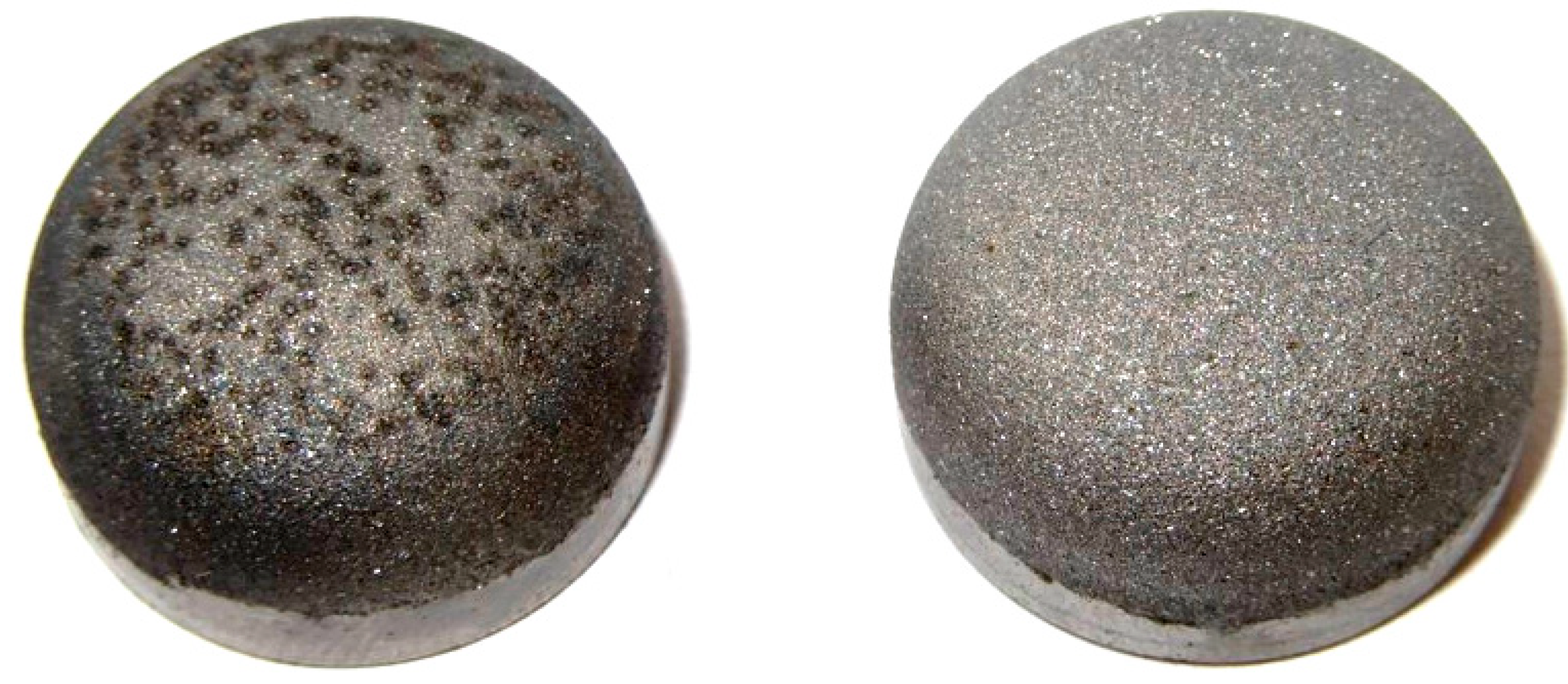
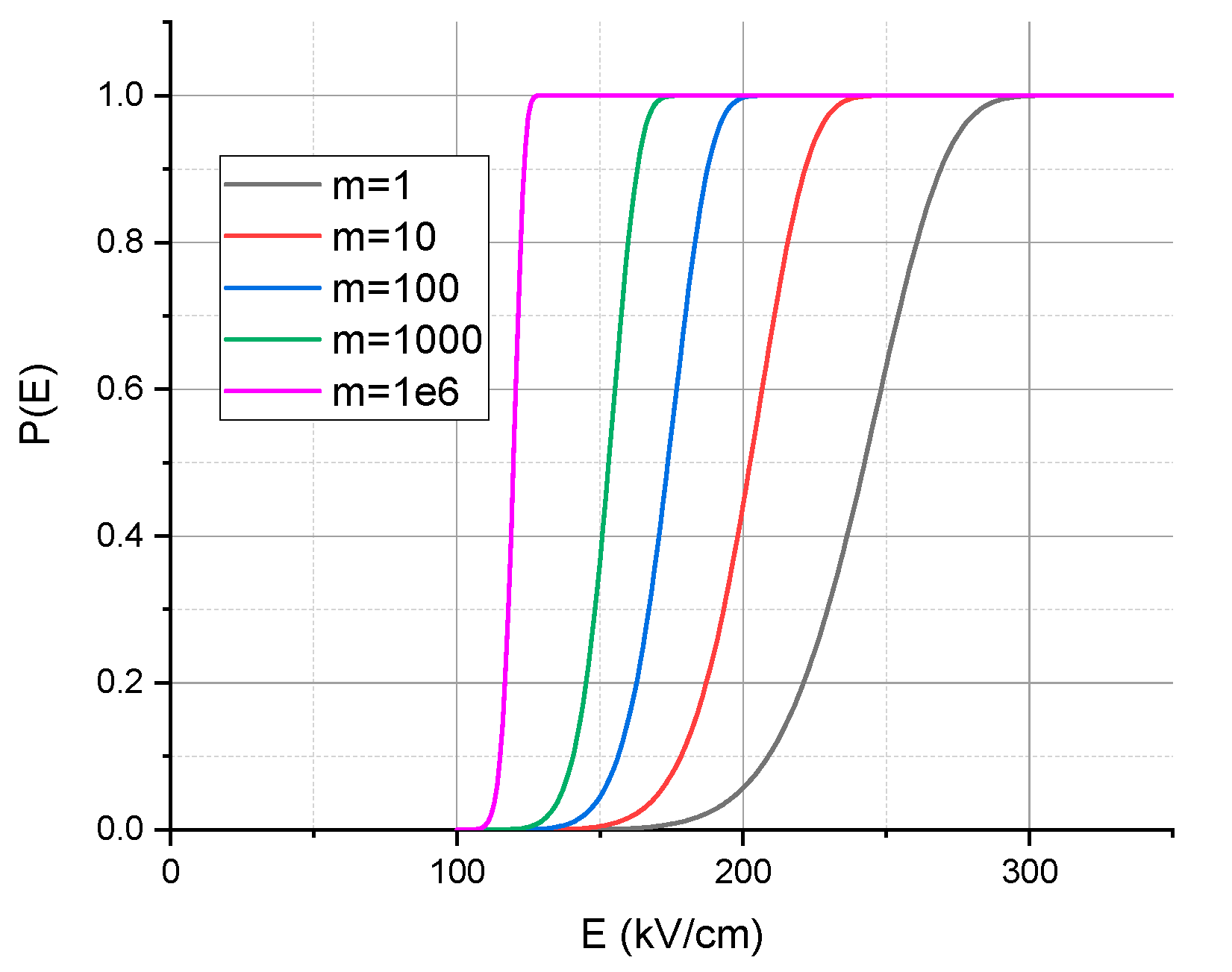
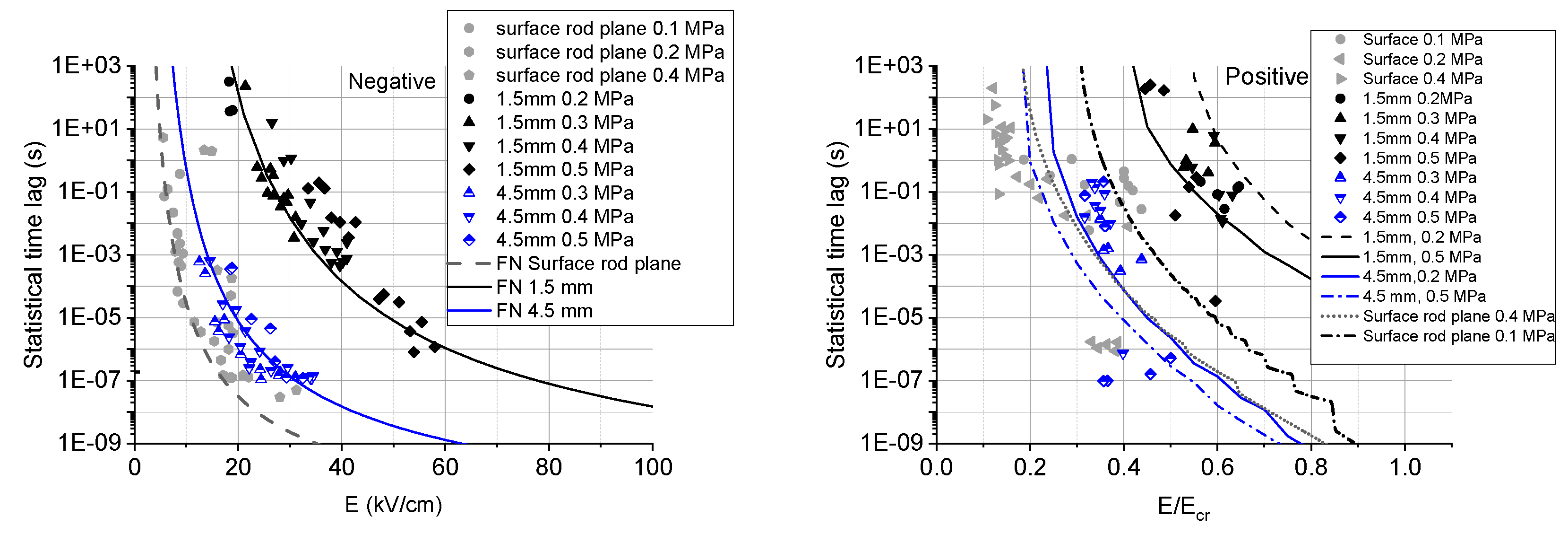
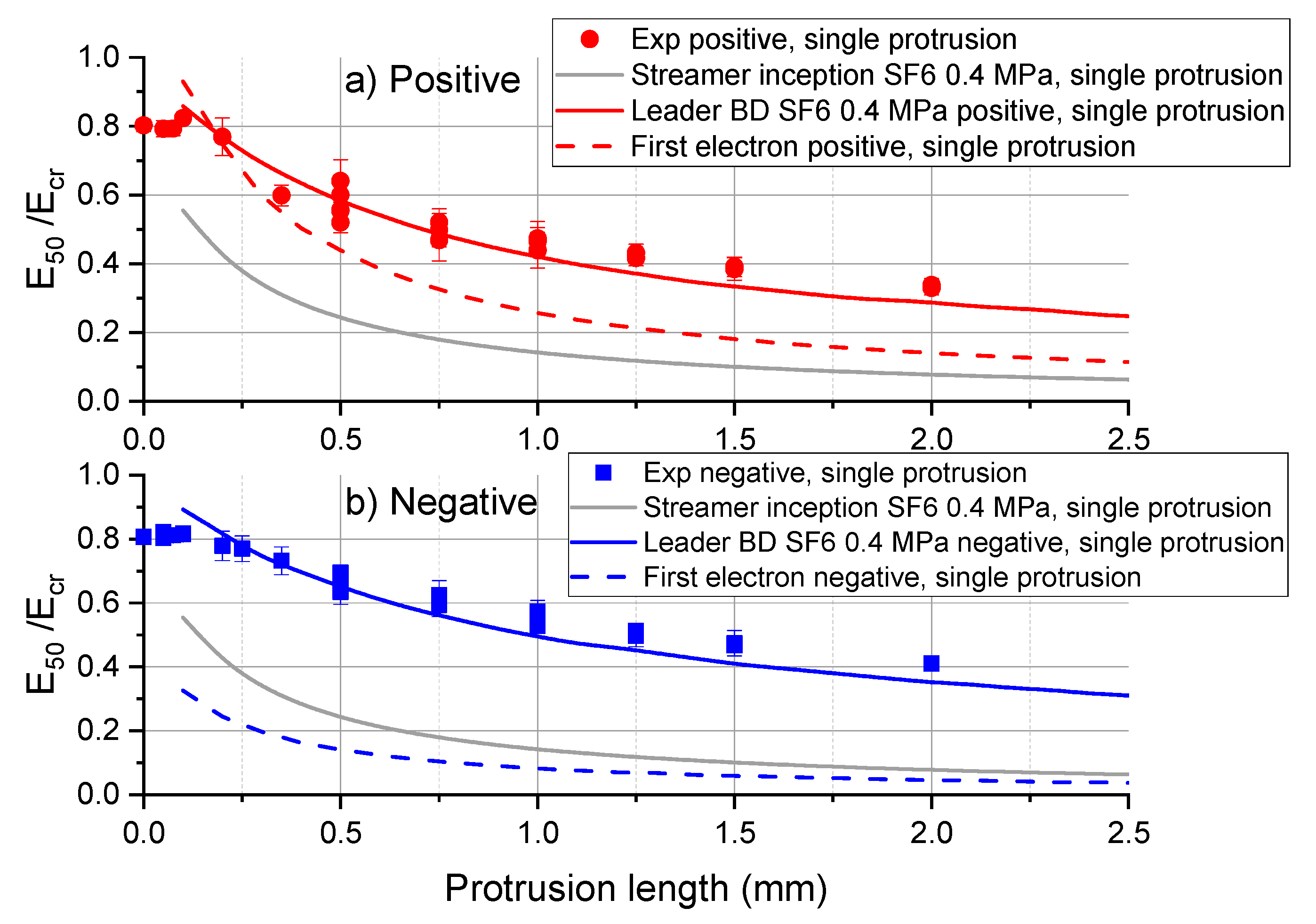
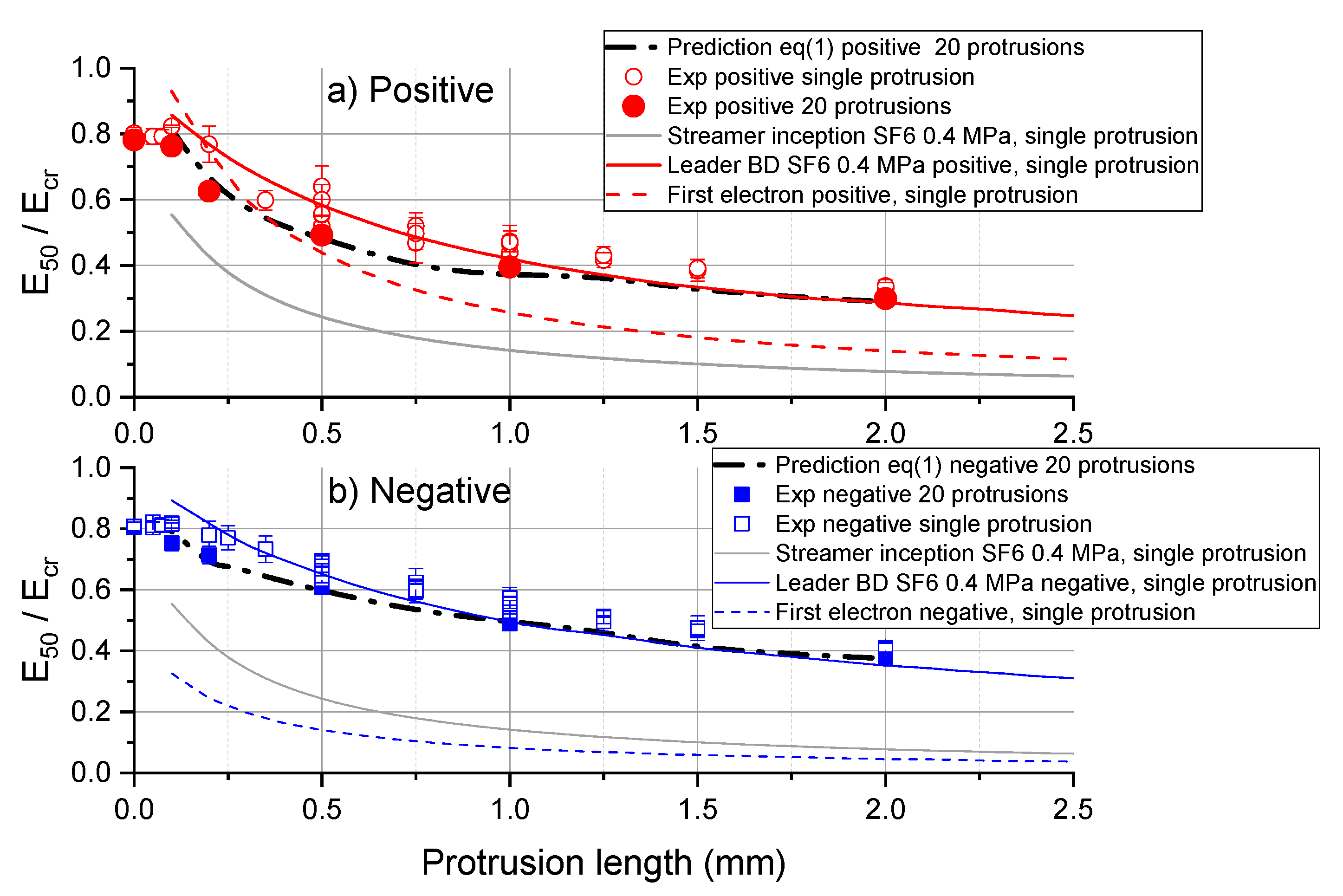
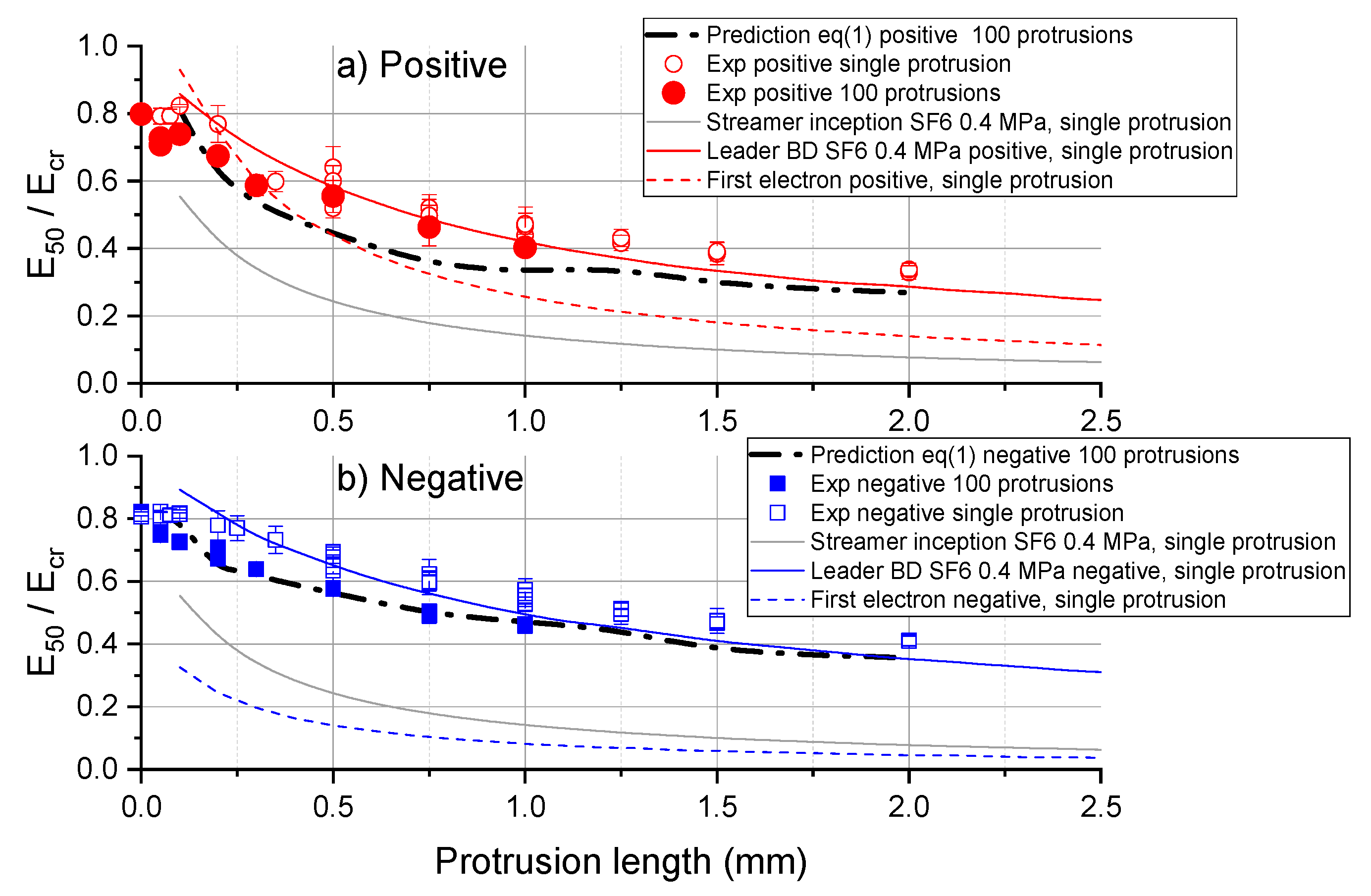
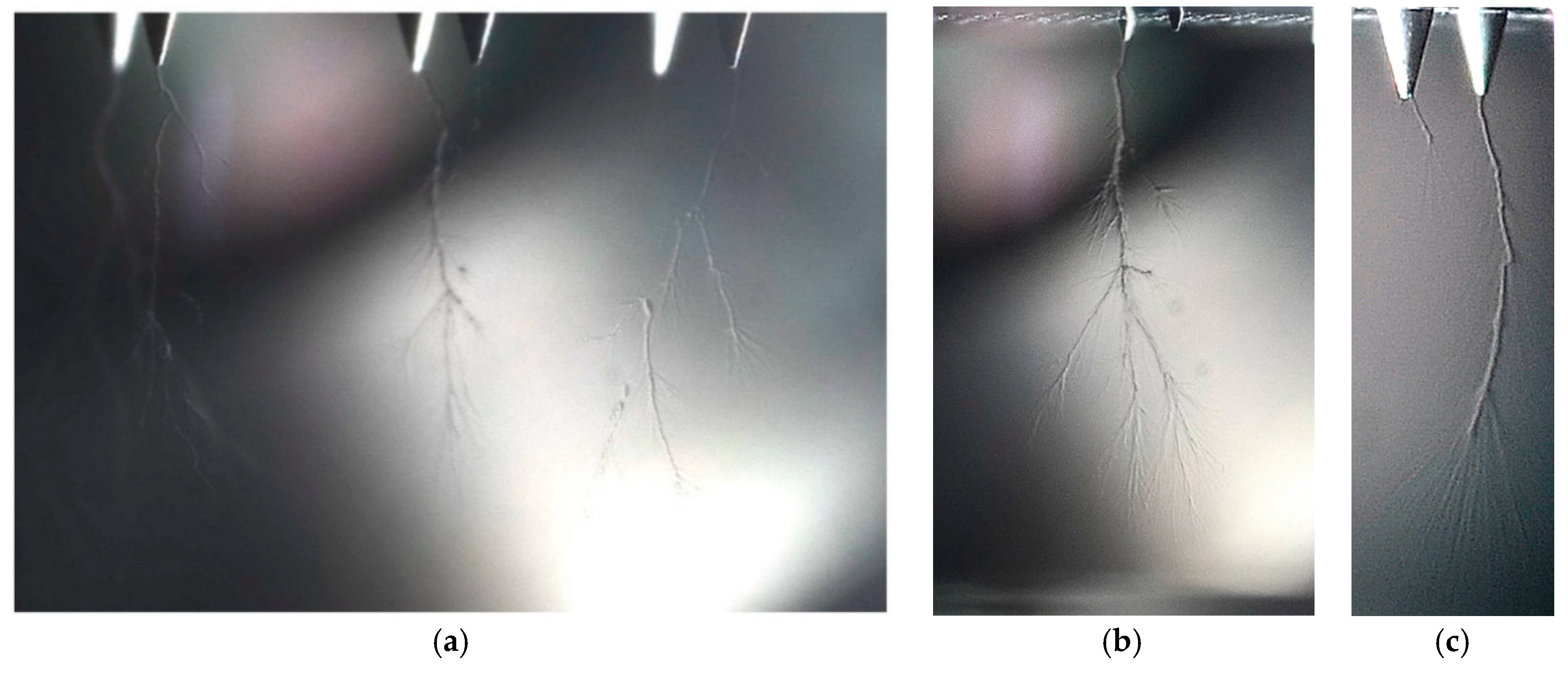
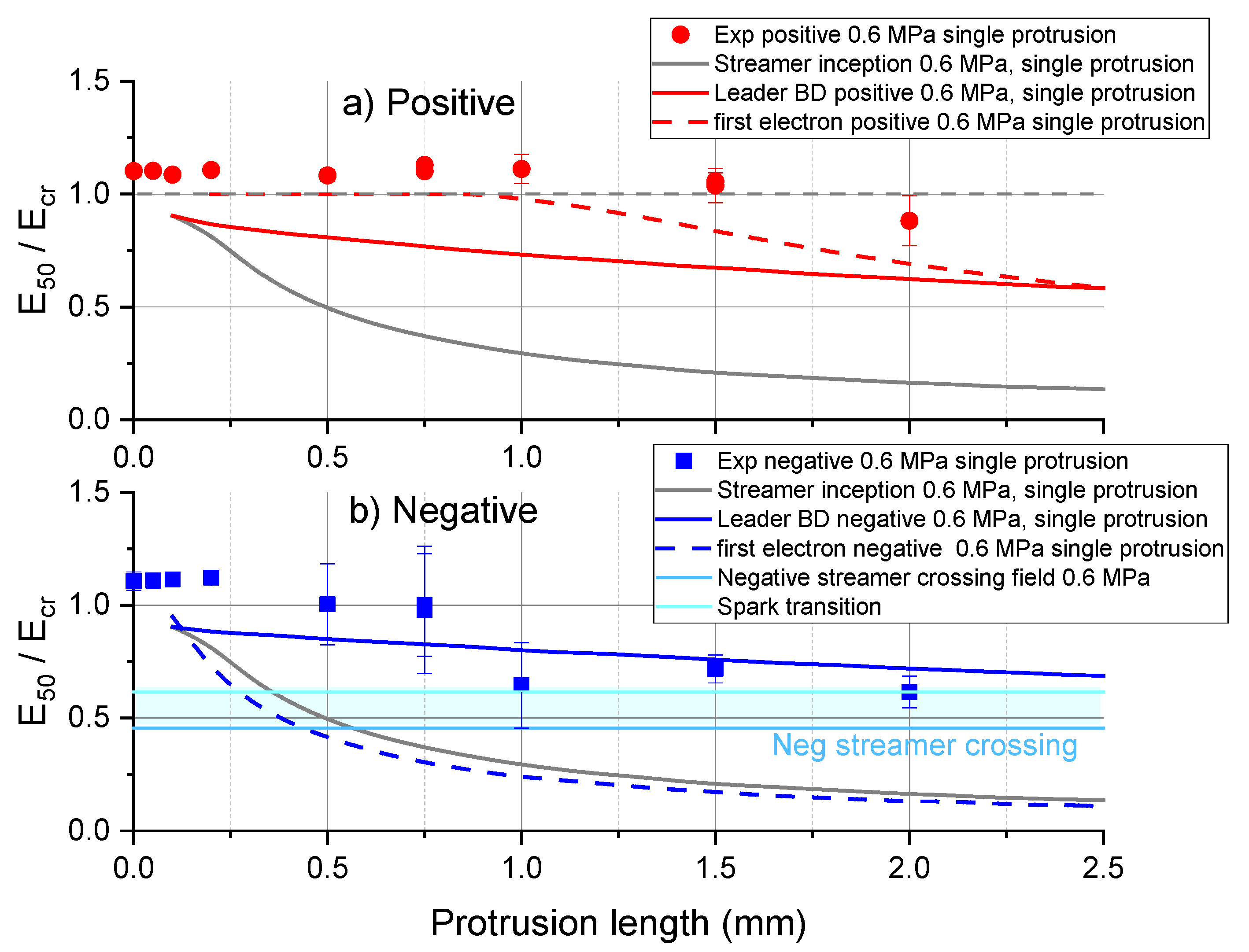
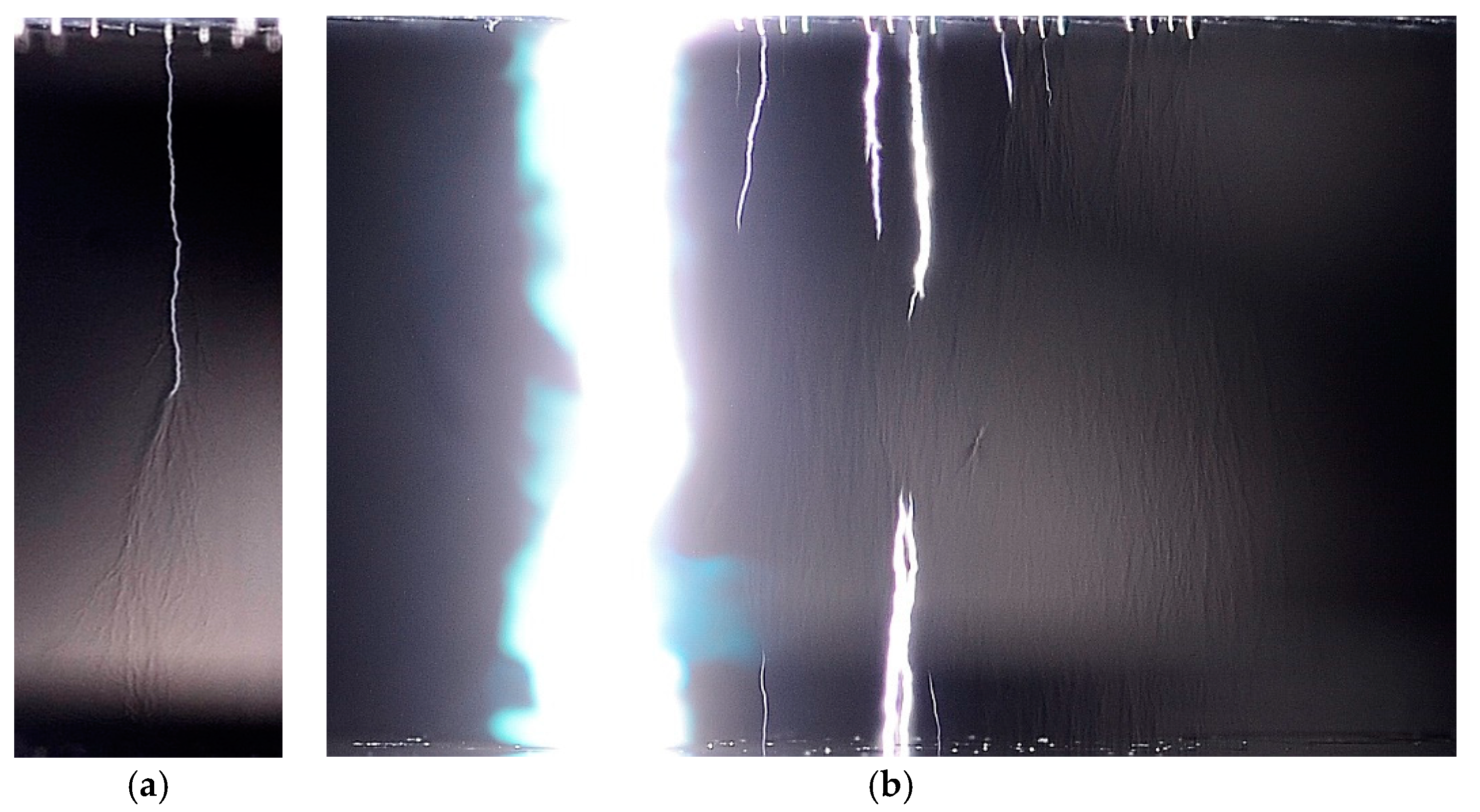
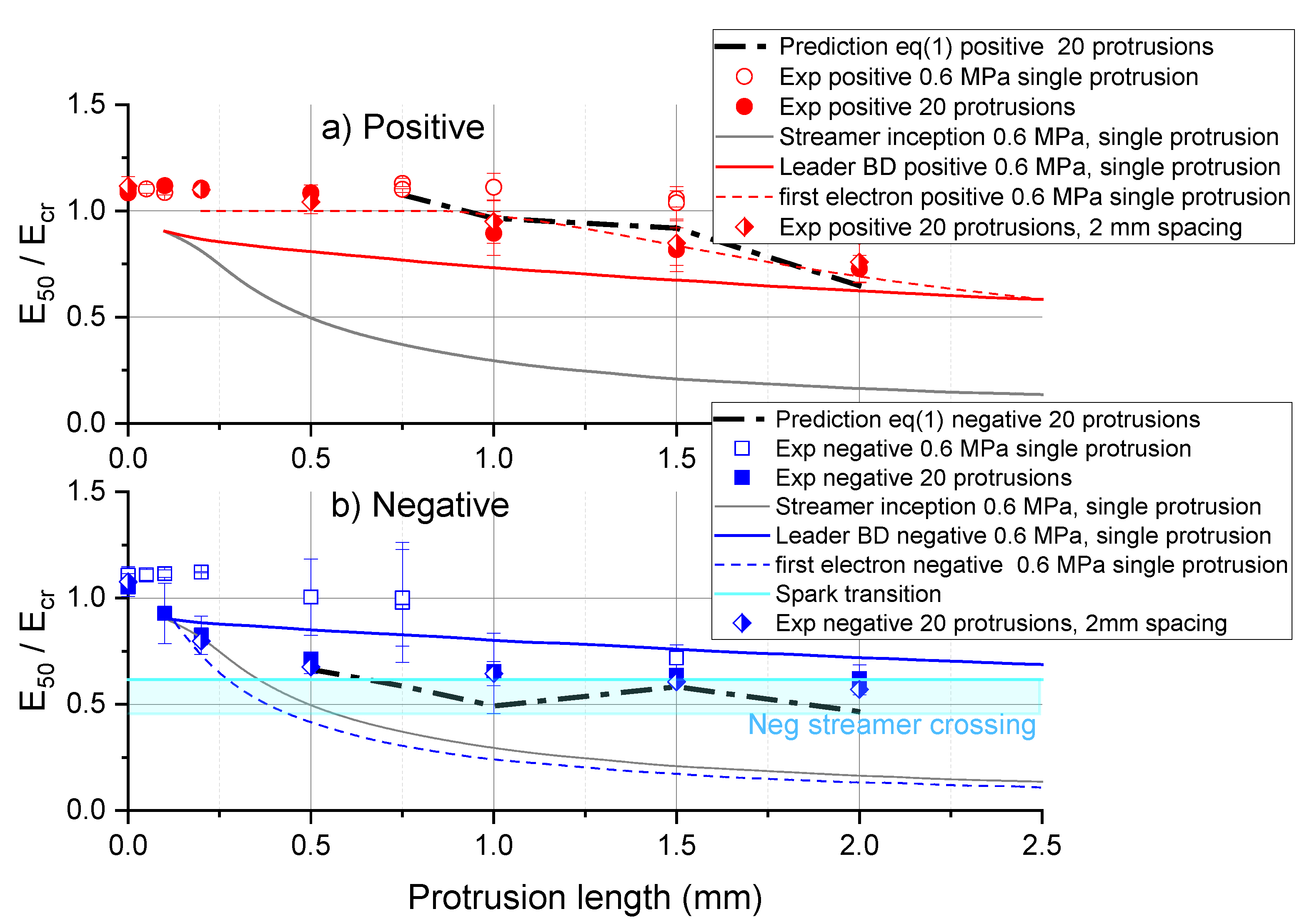

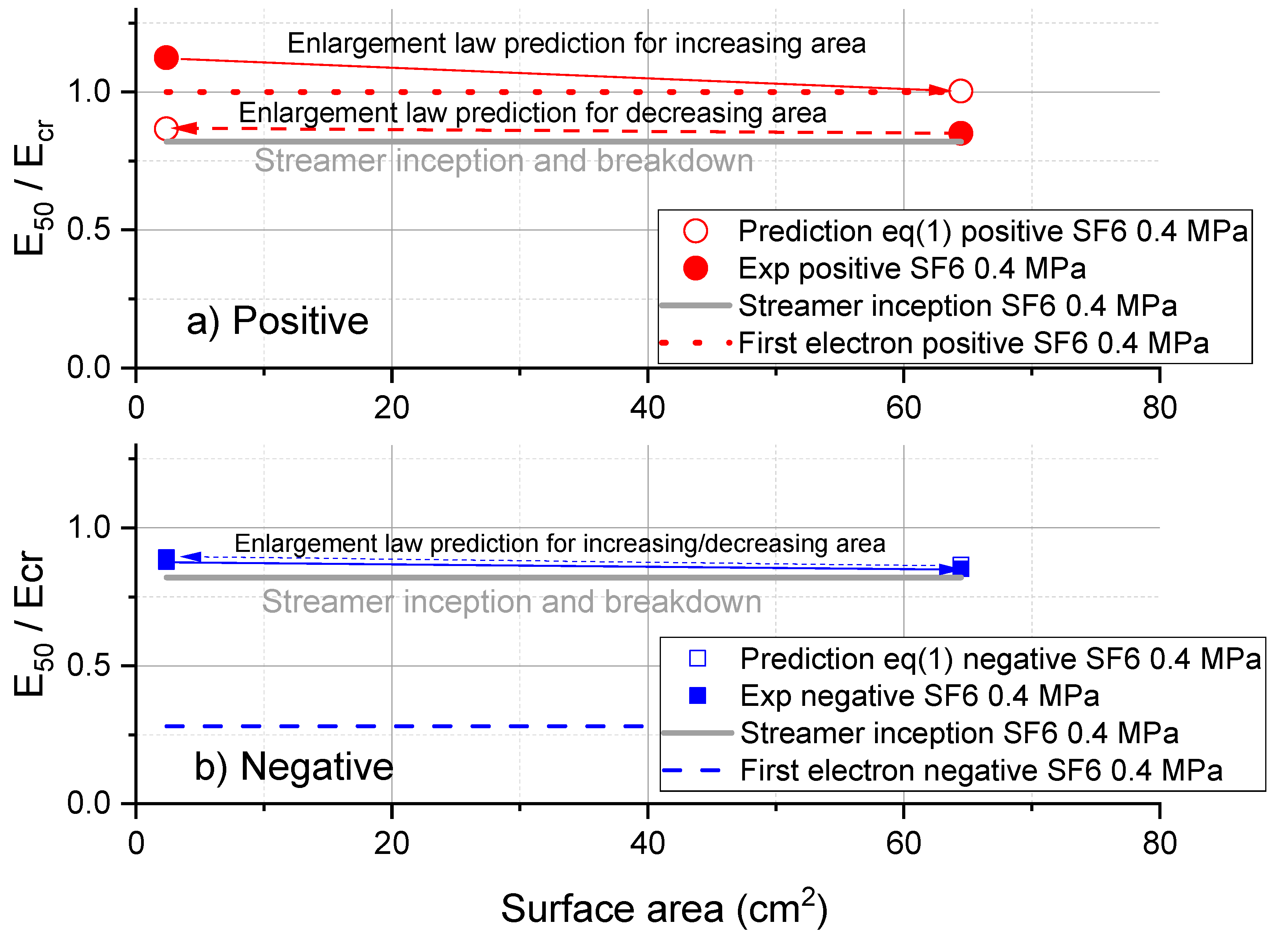

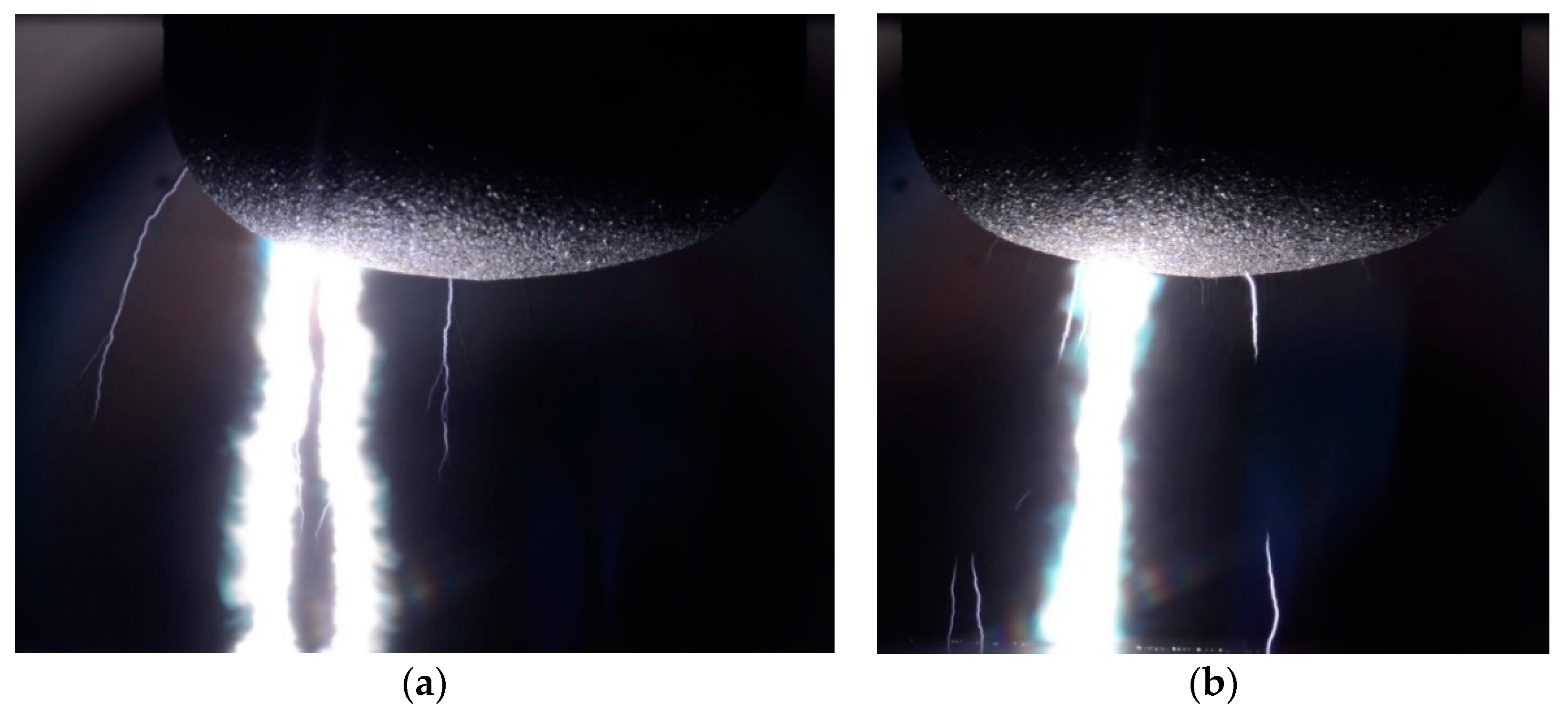
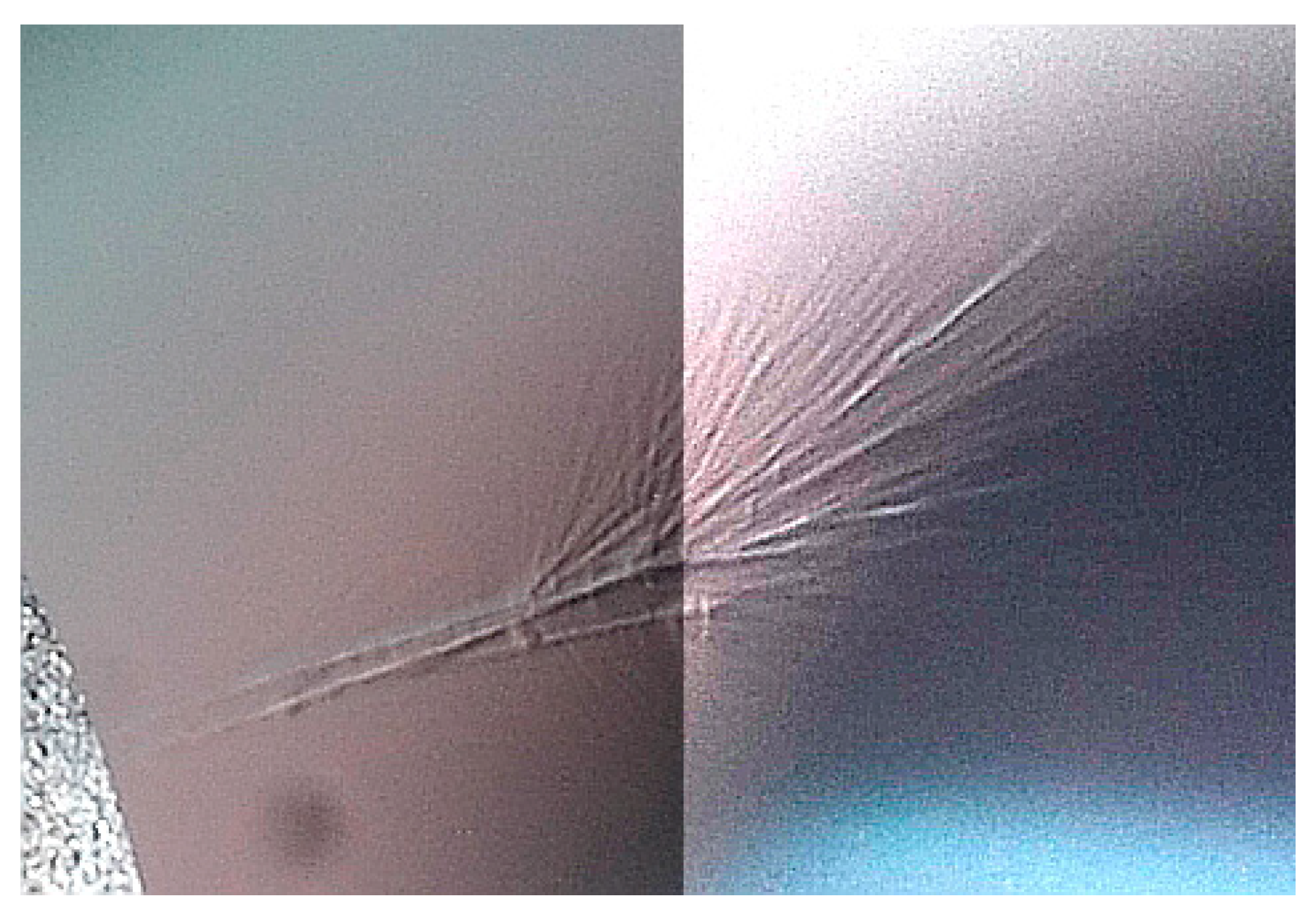
© 2020 by the authors. Licensee MDPI, Basel, Switzerland. This article is an open access article distributed under the terms and conditions of the Creative Commons Attribution (CC BY) license (http://creativecommons.org/licenses/by/4.0/).
Share and Cite
Feet, O.C.; Seeger, M.; Over, D.; Niayesh, K.; Mauseth, F. Breakdown at Multiple Protrusions in SF6 and CO2. Energies 2020, 13, 4449. https://doi.org/10.3390/en13174449
Feet OC, Seeger M, Over D, Niayesh K, Mauseth F. Breakdown at Multiple Protrusions in SF6 and CO2. Energies. 2020; 13(17):4449. https://doi.org/10.3390/en13174449
Chicago/Turabian StyleFeet, Odd Christian, Martin Seeger, Daniel Over, Kaveh Niayesh, and Frank Mauseth. 2020. "Breakdown at Multiple Protrusions in SF6 and CO2" Energies 13, no. 17: 4449. https://doi.org/10.3390/en13174449
APA StyleFeet, O. C., Seeger, M., Over, D., Niayesh, K., & Mauseth, F. (2020). Breakdown at Multiple Protrusions in SF6 and CO2. Energies, 13(17), 4449. https://doi.org/10.3390/en13174449




